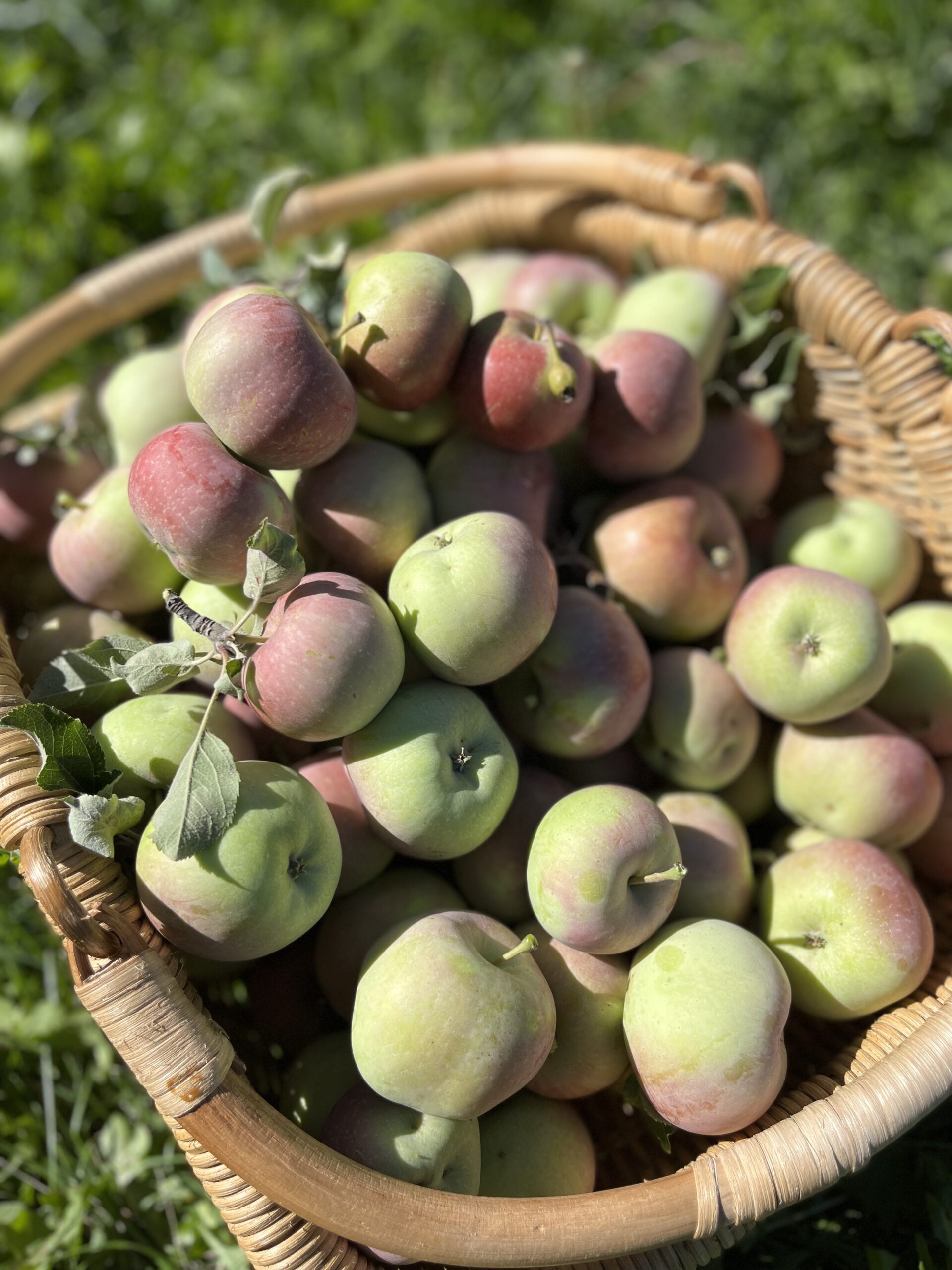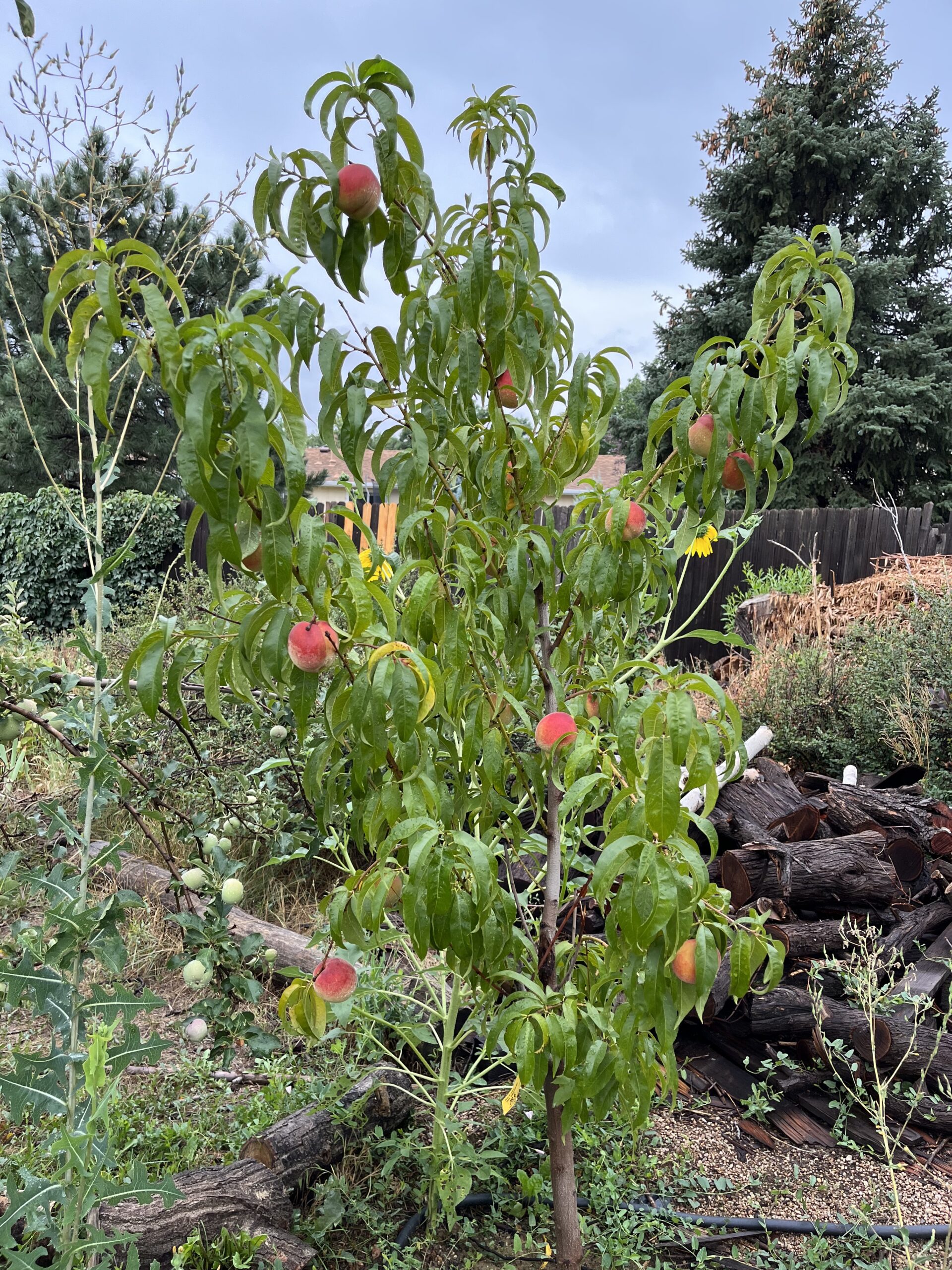There is something about growing, harvesting, cooking, and preserving my own food that makes me feel powerful.
Don’t get me wrong: even as we add to our food forest we’ll probably never be able to produce all the food we would need to live in a year. And that’s OK. That’s not my goal.
(We’ll likely have more of some types of food than my family of three can eat in a year, and I look forward to being able to donate some of our excess to a food bank in future years.)
But there’s something about providing for oneself that makes you feel powerful. It’s about thumbing my nose at capitalism in some small way.
Harvesting… rain
Over the past couple of weeks, Brandon installed two rain barrels — and they were both filled with one night of steady rain. Makes me think we might eventually need more…
Devyn and I moved dozens of strawberry plants to make way for our wadi, and we had landscapers come and dig it last week.
A wadi is essentially just a dry/seasonal creek bed. It starts at the downspout from our rain gutters at the northeast corner of the yard and continues to the back of the yard where there is a small (6-foot-ish) seasonal pond.
It was dark when it rained the first time after the wadi was finished, but Devyn and I went out with umbrellas and flashlights to watch it run.
The idea is that it will move water from the house back to the orchard area of the yard, helping to provide water to the trees and plants back there. The landscapers originally suggested we put down weed barrier and rocks, which would be attractive I’m sure, but sort of defeats the purpose for me. I don’t want all that plastic in the landscape for one thing; we’d have to spray to keep the weeds out of the rocks anyway (ask me how I know), and then whatever we sprayed — even my highly effective mix of salt, vinegar, and dish soap — would be carried down to the trees. Not what we want.
So for now we’re going with the natural look, though we may line them with rocks later. (See below.)
They also built and filled two 6×6 planters for vegetables for next spring. And in the spring, they will return to plant our next 12 trees for the food forest. (NEVER doing that by ourselves again, if we can help it!)
Fall bulbs for spring blooms
In the meantime, Devyn and I will weed the area under the 12 trees we put in this year and plant 50 (!) daffodil bulbs for spring. The daffodils are part of the fruit tree guilds and will help deter pests. Plus, I LOVE daffodils and have always wanted a huge carpet of them, so I’m about to get my wish. Fifty seemed like a lot when I ordered them, but I realized it’s really only 4 bulbs per tree — fewer than the 8 on the plan for each guild — so we’ll add some more next year. Baby steps!
I also ordered a variety of bulbs for her first (of two) flower beds for her secret garden. We repurposed rocks from another part of the yard to delineate the space for the flower bed, and used some of the garden dirt we had trucked in to fill it.
The bulbs will go in this fall, and then in the spring, we’ll add a variety of perennial flowers — chosen because they were mentioned in The Secret Garden — to fill out the flower beds. It’s going to be fantastic!
Makin’ mulch of time
We also just ordered and received a wood shredder/chipper so that we can make our own mulch.
When we had the old trees taken out in the spring, we asked the guy to leave all the branches. and trunks, and now we’ll be turning them into good mulch to spread around the fruit trees to protect them, build the soil, and keep down the weeds (hopefully).
We thought about renting a chipper, but Brandon realized that the cost of renting ($300 a day or so) meant we would have fully paid for one after just two days of use — and we’ve got at least two days worth of mulching to do. So we decided to just buy one. We chose an electric version that also shreds leaves.
Returning “waste” back into the system is also a value of permaculture; so rather than having someone haul off all that wood from our downed trees (trees which used the nutrients etc. from the soil in our yard while they were growing) and then paying to bring in mulch from somewhere else, we will make the effort to mulch as much of the wood as we can and return it to the system.
The chipper we bought will only do small branches and leaves and it still requires a good amount of effort to move the branches, put them through the chipper, spread the mulch, etc. But I think the cost of the chipper and the effort will be both less expensive and better for the space in the long run.
Rolling rocks
Another way we’ll keep things in the system is to reuse some of the rocks and pebbles that were already in our yard.
Much of the entire west side of the back yard was covered in pea gravel when we bought the house; because of a tire swing in the tree, I assume it was part of a play area for the kids who lived here before.
But, over the last decade, the weed barrier under the gravel has rotted and the gravel area has become full of weeds and plants. We will keep the gravel area under the greenhouse — and under the future second shed/greenhouse we plan to add — but much of it needs to go.
I talked to the landscapers about it, and they kindly (and I’m sure rightly) told me that it would likely be more expensive for them to move and clean it than to have them remove it and buy new gravel. A big expense and a waste of resources.
So, much like the mulch we’re making, we’ll be moving the gravel on our own, bit by bit… We plan to use it to line the pond, and possibly the bottom of the wadi. It will take time, but along with the making and spreading of the mulch, these are jobs that can be done on sunny winter days when there’s not much else going on.
Fall fruits
Last week, Devyn and I harvested 15 pounds or so of apples from our mature Fuji apple tree. It’s strange because ours is the only tree to have a good fruit year that I’m aware of — perhaps our funny microclimate protected the blossoms from a late freeze. Whatever the reason, the tree is groaning with fruit.
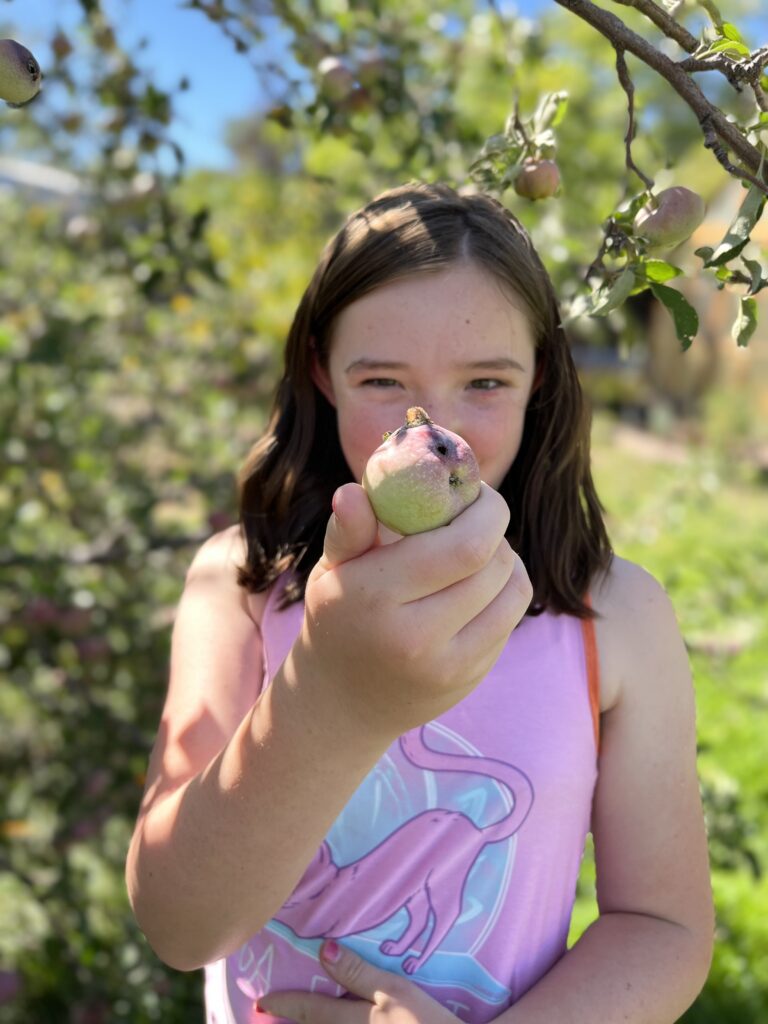
We kept 6 pounds from this first harvest for eating and I’m making applesauce with the rest. Five pints so far, and barely a fraction of the apples picked.
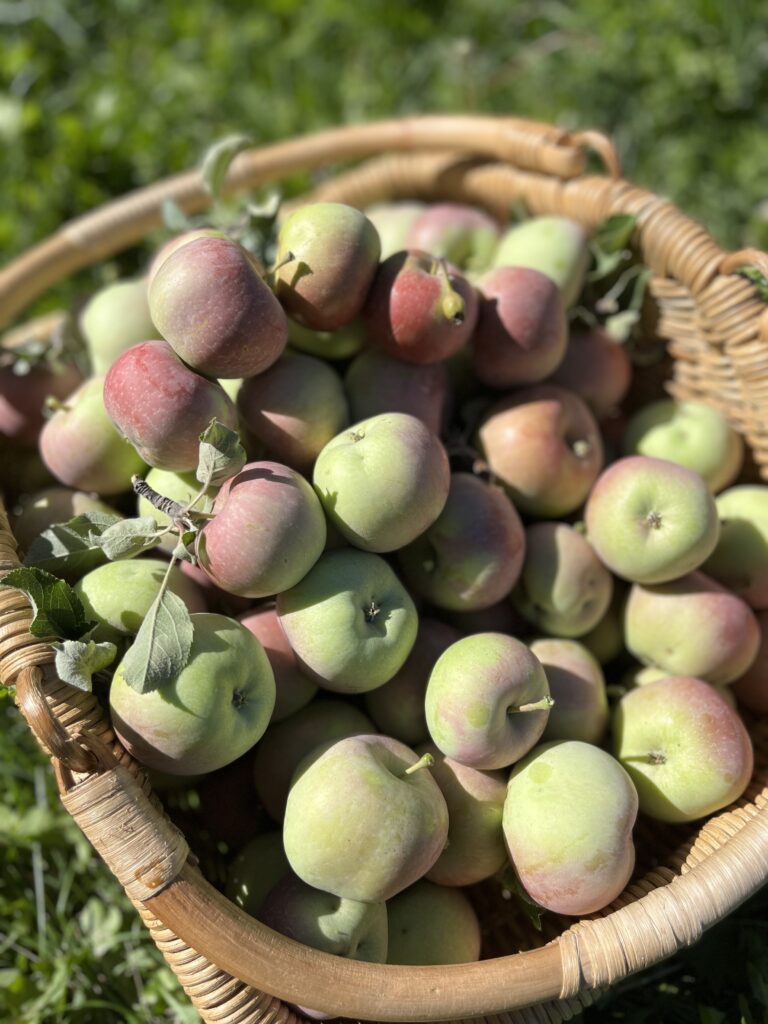

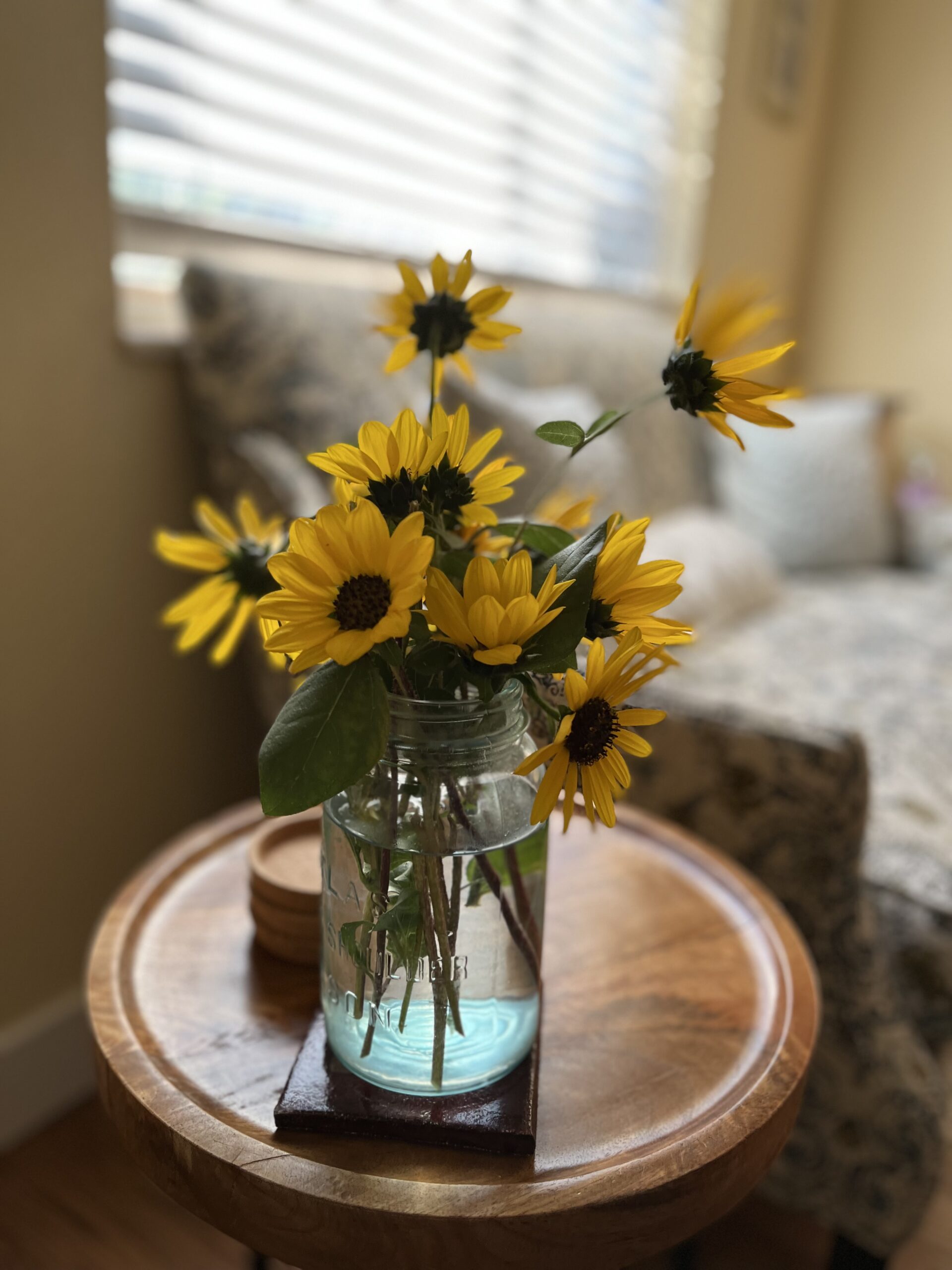
We’ll leave the smallest apples and those with buggy bits for the insects and squirrels and birds. Between that and the many wild volunteer sunflowers we were blessed with this year, the fauna in our back yard should be set up pretty well for fall and winter.
Fall feelings
It’s finally feeling like we’re making real progress toward the plan. Despite putting in so many trees in the spring, most of the summer felt like we were stalled. It was so hot, and we were traveling, and there were things we couldn’t do until we could get the hardscaping done…
Now, with the wadi and pond dug, the chipper here to make mulch, the bulbs ready to plant, it feels like we are really building and making progress toward something. I’m already dreaming about how things will look in the spring, with dozens of daffodils blooming, a baker’s dozen of beautiful fruit trees blooming, and Devyn’s sweet Secret Garden starting to take shape.
It’s also reminding me that the best laid plans don’t always work. I love our design, but some of the things just haven’t worked in practice. And that’s OK. The design is the vision; it’s not necessary to adhere to it rigidly. We get to work with our land and what’s happening in reality today. But the design gives us direction and a goal, which we sorely needed.
As the growing season ends, I’m already looking forward to what next year will bring. I’ve started following a couple of urban gardeners on social media who are very inspiring. My friend Wendy had a bumper crop of tepiary beans this year, which makes me want to try them in our garden next year. I want to try interplanting asparagus crowns with our strawberries (a trick I saw online), and I can’t wait to go to the nursery with Devyn to pick out the flowers to fill in her Secret Garden.
I can just begin to picture the ground beneath the trees carpeted in bright nasturtium flowers, yarrow, dill, and chive blossoms, and the sweet daisy heads of chamomile, the young branches above thick with ripening fruit of all kinds and colors.
We’ve got a long, cold winter ahead of us, but there’s still work to be done. We need to find a tree service that can help us remove a bunch of thorny, prickly bushes from the southwest corner to make way for trees and flowers. We need to make mulch and move rocks. But it is nice to finally feel like we’re making progress toward the goal.

